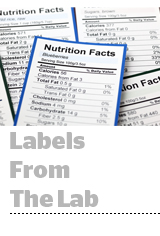 The IAB Tech Lab on Wednesday released a disclosure framework to help buyers evaluate the attributes of audience segment data.
The IAB Tech Lab on Wednesday released a disclosure framework to help buyers evaluate the attributes of audience segment data.
The Data Transparency Framework is open for public comment until July. The IAB Data Transparency Standards Working Group will incorporate the feedback into a final version released this summer.
If the framework is adopted, digital media buyers will receive information about sourcing, age and any modeling used for third-party audience segments, data transacted through a co-op or first-party data sold directly by a retailer or media company.
“It will end the false notion that data is an undifferentiated commodity,” said David Justus, Lotame’s VP of data acquisitions and operations and a co-chair of the IAB’s data transparency standards working group.
The framework could reveal to a buyer that a generic “auto intenders” segment in a demand-side platform or data management platform includes cookie-based audiences from publishers like AutoTrader or Edmunds and was passed to aggregators like Oracle, Salesforce or Lotame, where it was perhaps filled out with modeled data.
Under the framework, buyers would learn what percent of an audience segment came from publishers with direct consumer interactions, when the data was collected and which other companies were in the supply chain.
The framework would also mark the introduction of metadata into the openRTB process as a way to characterize the provenance of data used in media campaigns said Dennis Buchheim, IAB senior VP and general manager of the IAB Tech Lab.
For the purposes of the framework, Buchheim said the notion of quality can be deceptive.
A brand interested in unique audience reach may want modeled data to add lookalike targets, while some brands would prefer segments rich in site visitors supplied directly by publishers.
About 40% of Pandora’s advertising is targeted using “sophisticated audience segments” that include data beyond base-level age and gender, said Dave Smith, Pandora’s senior VP of monetization and yield and another co-chair of the data transparency group.
Half the data it collects directly from Pandora users, and the other half it buys from third parties to use on behalf of clients.
“What I’d like is the ability to show the characteristics that might indicate quality to advertisers to compare my segments to third-party segments,” Smith said.
There are some lucrative audience segment categories – such as new parents or ethnicity – where Pandora’s data could be stronger than the general market’s, he said.
The framework is an incredible for publishers to showcase their consumers, said Alysia Borsa, the CMO of Meredith and third co-chair of the transparency group.
“The industry has been plagued by bad data and had little transparency, which has hurt those companies with real and valuable consumer data,” she said.
The market for data in targeting and measurement has grown and is becoming more variable and sophisticated, said Justus of Lotame.
Companies are starting to sell data as a percentage of media, in addition to the traditional CPM buy, he said. And brands with sophisticated first-party data require more nuanced pre-bid information about how their data will match to audience segment targets.
To prevent bad actors from obscuring data attributes or outright lying about data to improve its value, Buchheim said later this year the IAB will introduce a compliance program, which will require data providers to undergo an audit to be included in the framework.
Those same data companies will have to pay to cover the third-party audit administration. Buchheim predicts that won’t hurt adoption because if the framework gains traction and quality data suppliers see it improving how their data is perceived by buyers, it could reach an inflection point in the industry like Ads.txt, where noncompliance starts to look like a proxy for low quality.
This post was syndicated from Ad Exchanger.

More Stories
Warner Bros. Discovery CEO David Zaslav Receives $51.9 Million Pay Package for 2024
TikTok Fave Duolingo Boosts YouTube Shorts Viewership 430% in One Year
Streaming Ratings, Week of March 10: Disney+ Sails to the Top Courtesy of Moana 2